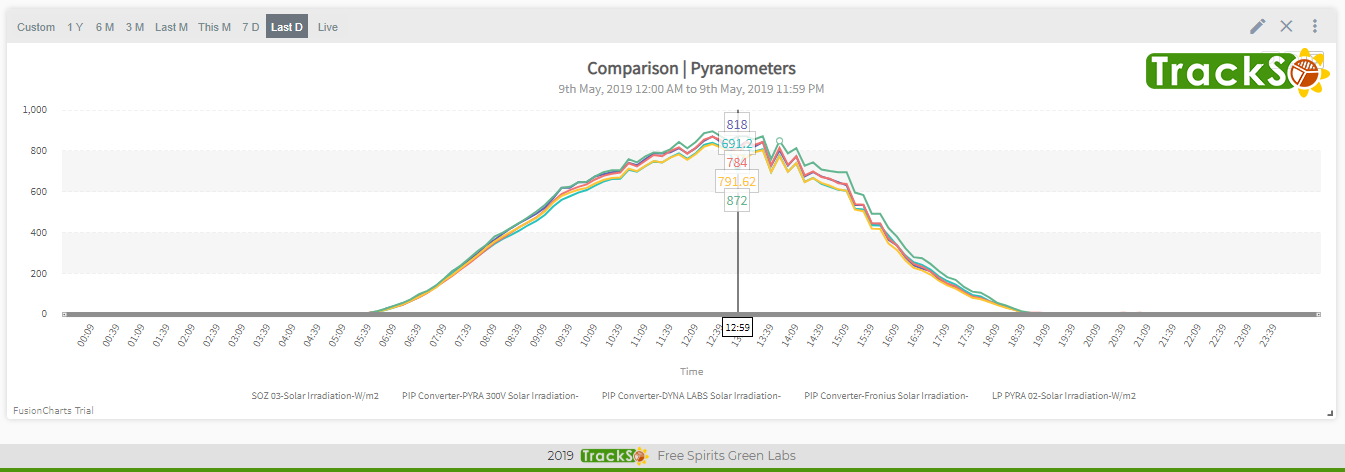What are the different classes of pyranometers ?
The following table compares all the differest sensor classes Classified in ISO 9060:1990 and Classified in ISO 9060:2018. It also includes a comparision with the non-class sensors available in the Indian Market
| Classified in ISO 9060:2018 | Spectrally Flat Class A |
Spectrally Flat Class B |
Spectrally Flat Class C |
Class C | Non Classified |
| Classified in ISO 9060:1990 | Secondary Standard | First Class | Second Class | Didn’t Exist | Non Classified |
| Accuracy | High | Good | Moderate | Moderate | Below Moderate |
| Response Time | < 15 sec | < 30 sec | <60 sec | ||
| Directional Response | 10 W/m^2 | 20 W/m^2 | 30 W/m^2 | ||
| Resolution (Smallest detectable change) |
1 W/m^2 | 5 W/m^2 | 10 W/m^2 | ||
| Temperature Response | 2 | 4 | 8 | ||
| Error % | ±1 % | ±2 % |
±5~10 % | ||
| Achievable uncertainty- Daily Total (95% confidence level) |
2 % | 5 % | 10 % | 15 % | |
| Cleaning | Once in a Week | Once in 2 Weeks | Once in a Week | ||
| Calibration | 1 yr |
2 yrs | ~ 1 yr | ~ 1 yr | |
| Stability (Change per year, % of full scale) |
0.8 % | 1.5 % | 3 % | 4-8 % | |
| Heating | Yes | Yes | No | No | |
| Ventilation | Yes | Yes | No | No | |
| Price | 4x | 2x | x | x/4 | |
| Few example Model No.s |
Delta Ohm Kipp & Zonen Eko MS-80 |
Delta Ohm Kipp & Zonen Eko MS-60 |
Delta Ohm Kipp & Zonen Eko MS-40 |
Kipp & Zonen Eko ML-02 |
Pyra 300V |
References
- WMO GUIDE TO METEOROLOGICAL INSTRUMENTS AND METHODS OF OBSERVATION(the CIMO Guide)
- TrackSo Datasheets
- ISO 9060:1990 Solar energy — Specification and classification of instruments for measuring hemispherical solar and direct solar radiation, International Organization for Standardization
- ISO 9060:2018
Here are some terms that are important refered in the above comparision table:
Response Time: Characterized by the time during which the instrument reaches 95% of the final value.
Directional response: Radiation incident on a flat horizontal surface originating from a point source with a defined zenith position will have an intensity value proportional to the cosine of the zenith angle of incidence. This is sometimes called the cosine-response or the directional response.in a pyranometer the directional response is influenced by the quality, dimensions and construction of the domes.
Temperature response: Percentage maximum error due to any change of ambient temperature within an interval of 50 K
Accuracy Class: Class of measuring instruments or measuring systems that meet stated metrological requirements that are intended to keep measurement errors or instrumental uncertainties within specified limits under specified operating conditions

Comparative Study | Solar Irradiation Sensors
Refer to our Comparative Study of various Solar Irradiation Sensors at this link
